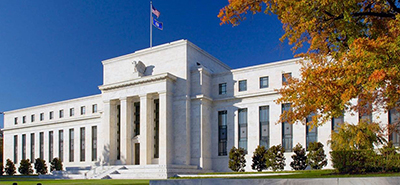
Ramp it Up: Fed Hikes Rates by 75bps for 3rd Straight Meeting

The Federal Open Market Committee raised the federal funds rate by another 75 basis points Wednesday to 3-3.25 percent, the third consecutive such increase and the fifth increase since March.
“The Committee is highly attentive to inflation risks,” the FOMC said in its statement. “The Committee seeks to achieve maximum employment and inflation at the rate of 2 percent over the longer run. In support of these goals, the Committee decided to raise the target range for the federal funds rate to 3 to 3-1/4 percent and anticipates that ongoing increases in the target range will be appropriate.”
The FOMC also noted the impact of Russia’s war with Ukraine in putting upward pressure on inflation as well as “tremendous human and economic hardship.”
“At 3%, the rate is now above what most FOMC members consider to be the long-term level and should be effective in reducing demand and slowing inflation over time,” said Mike Fratantoni, MBA Chief Economist. ““No changes were made with respect to their ongoing plans to reduce the size of their balance sheet. Rate volatility is high due to both uncertainty regarding the Fed’s next moves and the lack of a steady, consistent buyer for Treasuries, and particularly mortgage-backed securities.”
Fratantoni noted FOMC members’ projections indicate slower growth, slowly decelerating inflation and a fed funds rate that will likely top out well above 4%.
“The surprise for the market might be the median expectation that they could increase rates to 4.4% by the end of this year,” Fratantoni said. “Mortgage rates have jumped the past few weeks following the August inflation report, which indicated that the Fed will continue to be aggressive in combating stubbornly-high inflation levels.”
“As inflation remains persistently high, today’s rate hike announcement confirms that the Federal Reserve is committed to raising rates until inflation slows down,” said Michele Raneri, vice president of U.S. research and consulting with TransUnion, Chicago. “From a consumer credit perspective, the greatest impact to borrowers of continued rate hikes will be seen in the mortgage market, and to a lesser extent, the credit card industry.”
The full FOMC statement appears below:
“Recent indicators point to modest growth in spending and production. Job gains have been robust in recent months, and the unemployment rate has remained low. Inflation remains elevated, reflecting supply and demand imbalances related to the pandemic, higher food and energy prices, and broader price pressures.
“Russia’s war against Ukraine is causing tremendous human and economic hardship. The war and related events are creating additional upward pressure on inflation and are weighing on global economic activity. The Committee is highly attentive to inflation risks.
“The Committee seeks to achieve maximum employment and inflation at the rate of 2 percent over the longer run. In support of these goals, the Committee decided to raise the target range for the federal funds rate to 3 to 3-1/4 percent and anticipates that ongoing increases in the target range will be appropriate. In addition, the Committee will continue reducing its holdings of Treasury securities and agency debt and agency mortgage-backed securities, as described in the Plans for Reducing the Size of the Federal Reserve’s Balance Sheet that were issued in May. The Committee is strongly committed to returning inflation to its 2 percent objective.
“In assessing the appropriate stance of monetary policy, the Committee will continue to monitor the implications of incoming information for the economic outlook. The Committee would be prepared to adjust the stance of monetary policy as appropriate if risks emerge that could impede the attainment of the Committee’s goals. The Committee’s assessments will take into account a wide range of information, including readings on public health, labor market conditions, inflation pressures and inflation expectations, and financial and international developments.
“Voting for the monetary policy action were Jerome H. Powell, Chair; John C. Williams, Vice Chair; Michael S. Barr; Michelle W. Bowman; Lael Brainard; James Bullard; Susan M. Collins; Lisa D. Cook; Esther L. George; Philip N. Jefferson; Loretta J. Mester; and Christopher J. Waller.”
